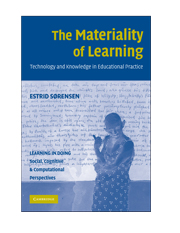6 - The Materiality of Learning
Published online by Cambridge University Press: 15 September 2009
Summary
We cannot learn what we already know. Therefore, I have been hesitant to provide theoretical definitions. Definitions have the ability to produce clarity and the disadvantage of making us stop wondering about and investigating what we have defined. By avoiding a priori definitions, and by meticulously describing each pattern of relations until a spatial formation took shape that could be characterized as a spatial imaginary, I have throughout the past chapters been able to describe a variety of forms of technology, knowledge, and presence. One of the crucial advantages of this sensitivity is that it allows us to describe the specificities of the how of participation and the what of performance. It thereby provides us with a methodology that allows us to reimagine technology, knowledge, and presence.
The principle of hesitating to provide definitions does not imply that we should avoid definitions altogether, or that definitions necessarily restrain intellectual development. On the contrary, the clarity they provide often forms good grounds for critique and reconsiderations. The principle of being hesitant is important, but at some point it is time to venture a narrowing-down of the discussion, and to let it come to rest in a definition. On the basis of the past chapters' discussions of materiality, spatiality, knowledge, and presence, we can define the materiality of learning. I defined materiality as the achieved ability to connect to other entities, and learning was defined as growth in knowledge.
- Type
- Chapter
- Information
- The Materiality of LearningTechnology and Knowledge in Educational Practice, pp. 177 - 194Publisher: Cambridge University PressPrint publication year: 2009



